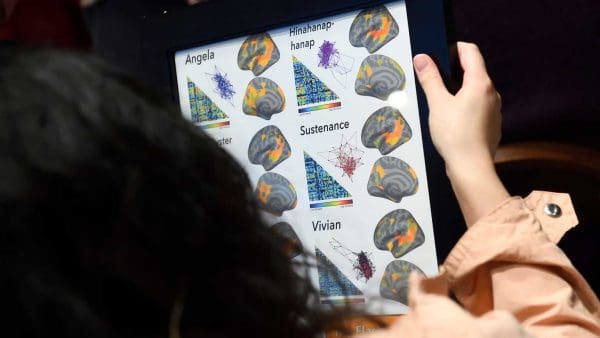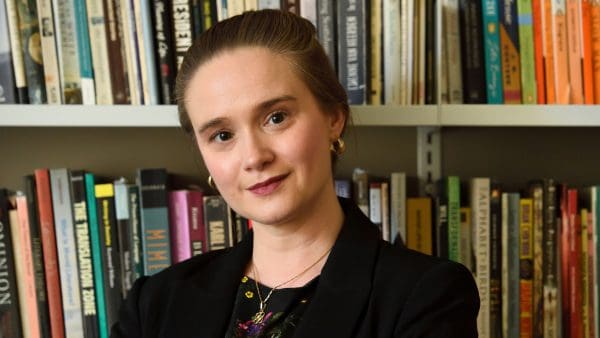Lights, camera, action! While synonymous with Hollywood, these words now also have powerful relevance for Baltimore with the opening this semester of the $10 million Hopkins-MICA Film Center. The education and film production complex is co-managed by Johns Hopkins University and the Maryland Institute College of Art as a home for their film programs, which have been collaborating for several years now. Composition and recording arts students from Hopkins’ Peabody Institute also use the building.
The roughly 25,000-square-foot facility occupies the entire second floor of the renovated Centre Theatre complex on North Avenue in the Station North Arts and Entertainment District, about a mile south of the Homewood campus. The state-of-the art facility includes screening rooms, classrooms, a professional-grade recording studio and sound stage, numerous editing suites, a large computer lab, and a substantial upgrade in the quality and quantity of film equipment available for student filmmakers. Flat-panel TV screens line hallways and dot lounge areas, allowing for the constant showing (and critiquing) of student films and works in progress.
“I don’t usually like to use a term like ‘game-changing,’ but this is really huge,” says Linda DeLibero, director of the Krieger School’s Program in Film and Media Studies. “We have always had a great film program, and our students have gone on to do really impressive things in the industry, but I honestly think this puts us in league with the best film programs in the country.”
Just one block west on North Avenue sits the historic Parkway Theatre, which is being renovated by Hopkins and the nonprofit Maryland Film Festival into the Stavros Niarchos Foundation Film Center. It is slated to open in 2017 as a three-screen, 600-seat film complex with additional facilities for student use.
“While our film program has been growing exponentially these last few years, it has always sort of been under the radar—but not anymore,” says Roberto Busó-García, director of the new master’s degree in film and media, also debuting this year. “Now we’re adding the resources to grow it further and as part of the push to make film, television, and other media a meaningful part of the Baltimore economy.”
Meanwhile, enrollment in the undergraduate film major expanded threefold this fall, and Busó-García says interest in the new graduate program, which includes concentrations in business, sound, and screenwriting, has been strong. “We’ve been inundated with applications,” he says.
“Between the Hopkins and MICA undergraduate and graduate programs, we’re going to have at least 100 people in the center at any given time of day,” DeLibero says. “And having filmmakers come in and present their work and teach and get exposed to the students is going to change their ideas of where Baltimore is in terms of film and the arts. I would love to see this be the catalyst for the city becoming a true center for filmmaking. Really, the sky is the limit.”

Filmmaker Matthew Porterfield, a faculty member in the Film and Media Studies Program, teaches a class in a green screen studio room and sound stage.








